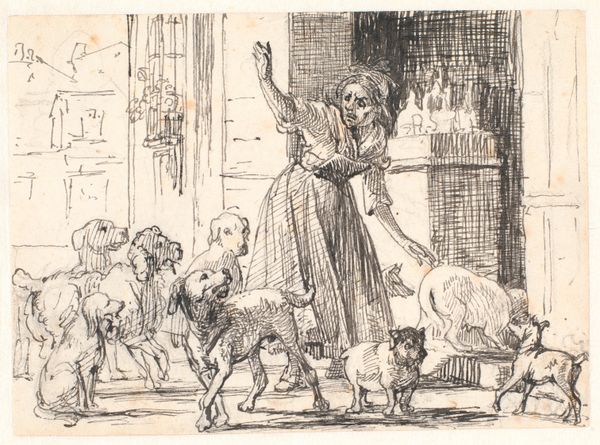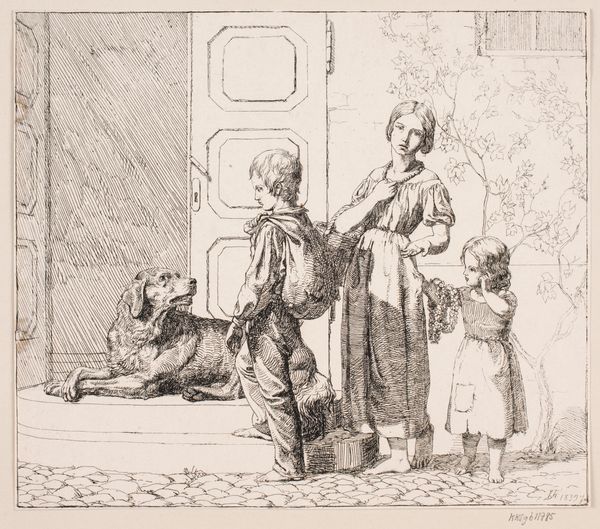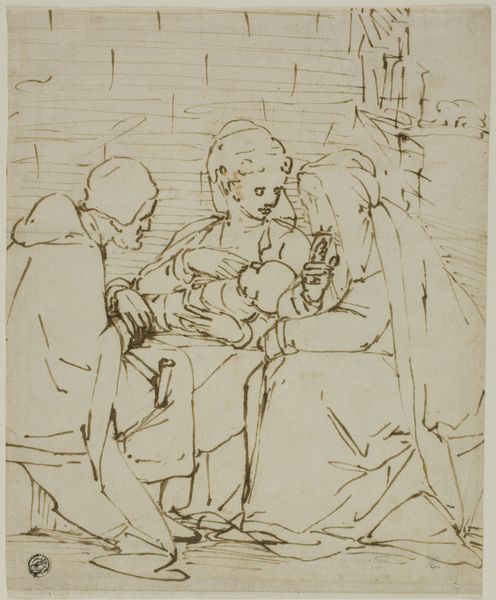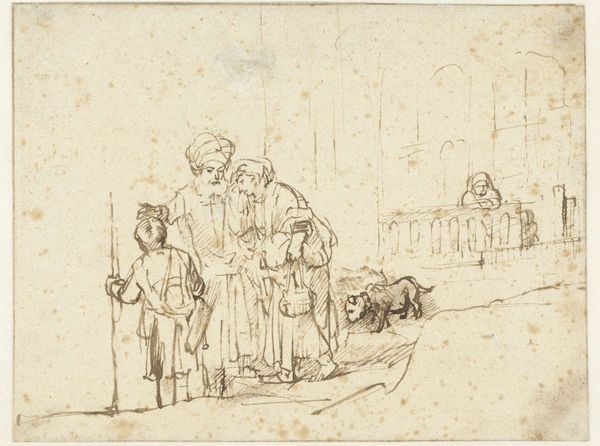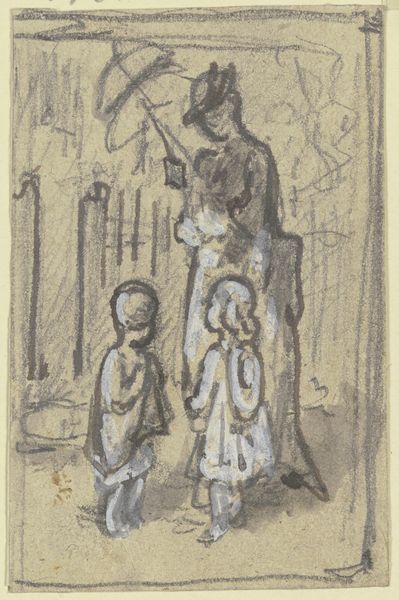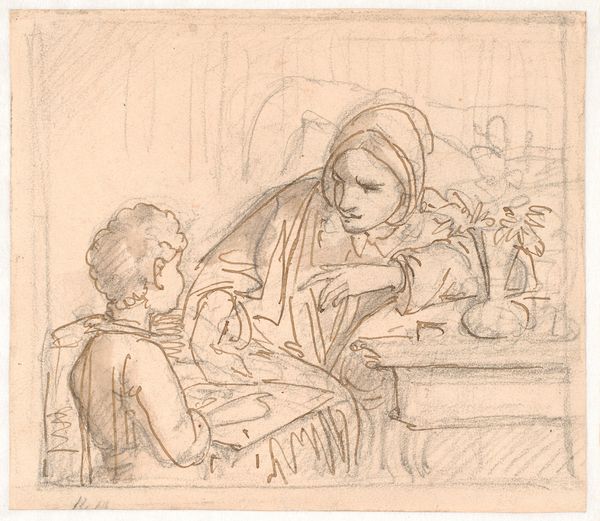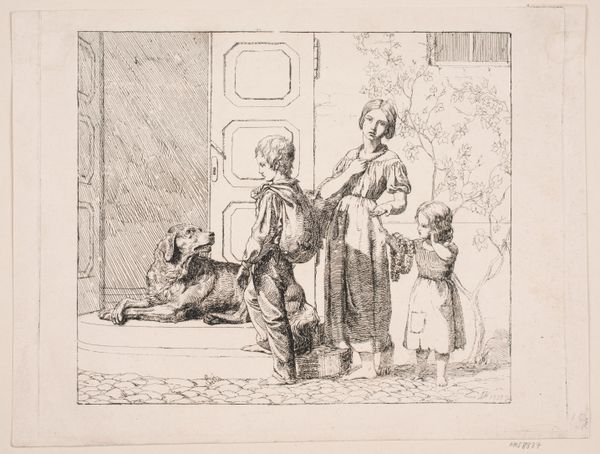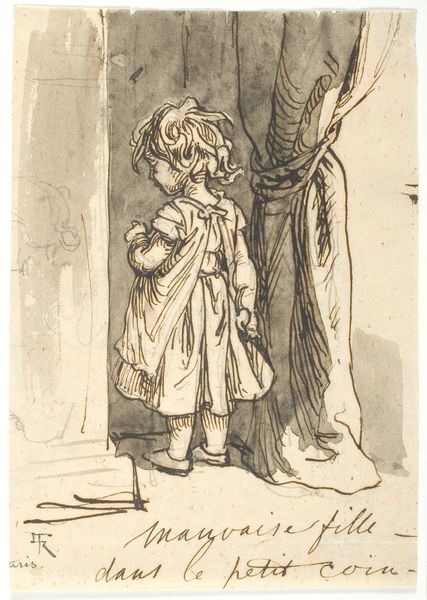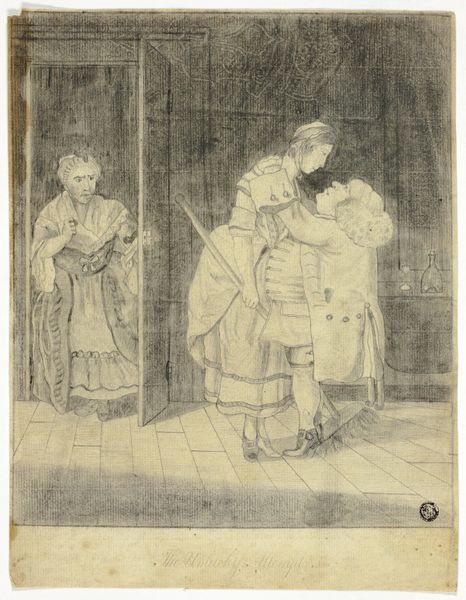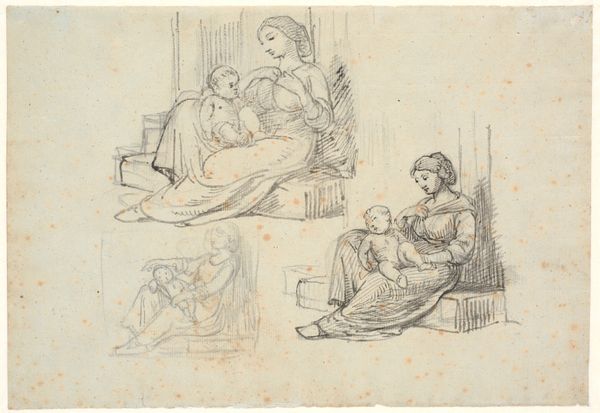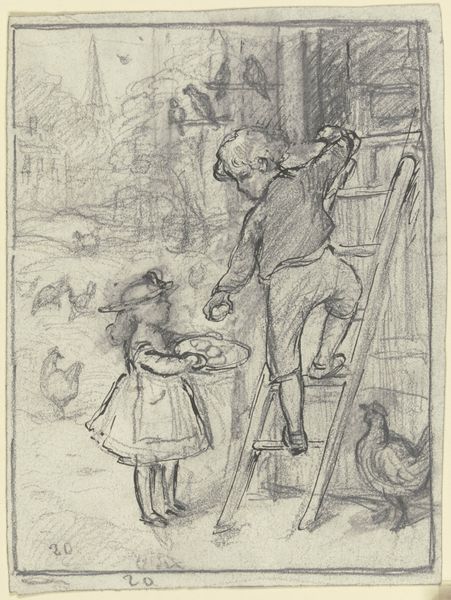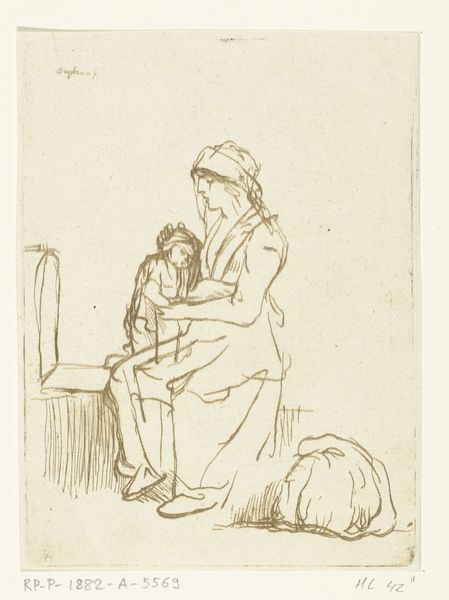
drawing, ink, pen
#
landscape illustration sketch
#
drawing
#
narrative-art
#
mechanical pen drawing
#
pen sketch
#
figuration
#
personal sketchbook
#
ink
#
sketchwork
#
ink drawing experimentation
#
romanticism
#
pen-ink sketch
#
sketchbook drawing
#
pen
#
genre-painting
#
storyboard and sketchbook work
#
sketchbook art
#
realism
Dimensions: 156 mm (height) x 186 mm (width) (bladmaal)
Curator: This is "Three Beggar Children," a pen and ink drawing executed in 1839 by Lorenz Frølich, held in the collection of the Statens Museum for Kunst. Editor: There's an immediate starkness to this drawing. The lines are spare, almost fragile, and yet they convey a poignant narrative. The scale also amplifies that delicate impression; it’s as if this entire world is etched with hesitant confidence. Curator: Indeed. Let’s look at how Frølich structures this simple yet powerful scene. The composition guides the eye from left to right, following the gaze of the children to the animals near the door. Notice the contrasts in line weight. The more defined lines articulate the foreground figures while thinner, lighter lines define the architectural setting and emphasize distance. Editor: And I'm struck by how those animal figures carry symbolic weight. The dog, usually a symbol of fidelity, here seems almost indifferent, oblivious to the children’s plight, while the cats, often linked to ideas of domesticity, ignore these orphaned children at the door. Is Frølich commenting on society's blind eye? Curator: Certainly. We can infer from the precise draughtsmanship in their garments – though tattered and worn, their form is carefully depicted – that these figures function as archetypes. Poverty is not only present, it’s meticulously observed and framed, but also aestheticized to a certain degree through Frølich’s use of classic forms. Editor: But there’s a profound unease, I think. While the image draws us in, there's a dissonance created by how Frølich balances romantic aesthetics with harsh reality, where the romantic ideals don’t mesh with the social decay depicted, mirroring social disconnects in that era. Curator: Yes. I think considering the line itself helps understand that dissonance. The linear nature almost flattens perspective, emphasizing surface. Even with shading, the texture created pulls focus back to the materiality of the art object. That invites the viewer to study technique instead of purely immersing in social commentary. Editor: And the emotional resonance hinges on that tension between style and symbol. The beautiful precision creates distance, yes, but the choice of representing the beggar children insists on drawing a connection between artwork, artist, and spectator, ultimately forcing reflection on the relationship of aesthetics to social concerns. Curator: A compelling insight. It’s in that very oscillation where "Three Beggar Children" achieves its artistic complexity. Editor: Yes, absolutely; an artwork that truly resonates through formal elements and symbolic nuance, sparking meaningful discourse.
Comments
No comments
Be the first to comment and join the conversation on the ultimate creative platform.
